The 12 Treasures of Spain
There’s no doubt you’ve heard of the 7 Wonders of the World… From Rome’s gladiator-fuelled Colosseum to bustling India’s Taj Majal, to the grandiose Great Wall of China, the 7 Wonders of the World showcase a phenomenal array of mankind’s greatest achievements.
So, have you ever heard of the 12 Treasures of Spain? Me neither. Up until I moved to Spain.
Basically, as one could presume by the name, the Twelve Treasures of Spain is just like the 7 Wonders of the World, but, it’s Spain’s exclusive version.
The nation selected twelve sites, all with reputable, significant historical and cultural value to the Kingdom of Spain.
The lengthy list includes fascinating architectural and natural landmarks, all drawn from every inch of this tremendous terrain.
Here’s what we cover in this guide:
Guggenheim Museum Bilbao
Beach of La Concha
Sagrada Familia
Ciudad de las Artes y Ciencias
Cathedral of Santiago de Compostela
Roman Theatre of Merida
Teide National Park
Basilica of Our Lady of the Pillar
Alhambra
Seville Cathedral
Cave of Altamira
Mosque-Cathedral of Cordoba
FAQs
So, if you’re fantasising about formulating a trip to fumble around Spain, then you can’t miss out on hitting up at least one of these hot spots. Let’s get this ball rolling. ¡Olé!
Guggenheim Museum Bilbao
Located in Basque Country, specifically in scintillating Bilbao, the very contemporary Guggenheim Museum Bilbao showcases unique, modern architecture and art.
Originally opened back in 1997, the museum remains one of the largest museums in the country to this very day. Designed by the architect Frank Gehry, this sprightly museum sits alongside the Nervión River which runs right through the heart of the city, all the way to the Atlantic coastline.
The Guggenheim Museum Bilbao is home to contemporary masterpieces, of both national and international importance. The museum explores the notions of dynamic culture, education, and initiatives all delve into through art.
The building is a sight worth seeing in itself. Featuring distinctive, titanium curves and a towering glass atrium, the futuristic design will render you speechless.
Spanning more than 11,000 square meters of space, the exhibition boasts more than a whopping 19 galleries.
With its cutting-edge architectural design, there is a sheer integration of both aesthetic art and architecture that simply cannot be imitated.
Virtual Tour of the Guggenheim Museum
Timetable: Tuesday to Sunday, from 11 am to 7 pm.
How to get to the Guggenheim Museum:
Metro: Stop: Moyua, exit: “Ercilla-Guggenheim”
Bus: #1, 10, 13, 18, A7: “Museo 1/Henao”. #13, 27, 38, 48: “Alda. Recalde 31 & 11”, & “Alda. Recalde 12”. #11, 71: “La Salve/Igogailua” & “Campo Volantín/La Salve”.
General access: Avenida Abandoibarra, 2
Beach of La Concha
Situated in the heart of San Sebastián, also in the Basque Country, paints the picture-perfect scene behind the Beach of La Concha. Known locally as the ‘Playa de la Concha’, this is actually the only beach to be inducted into the 12 Treasures of Spain.
Epitomising Spain’s sublime beach scene, the urbanised beachfront mimics the shape of a crescent. The ever-so verdant Urgell and Igueldo mountains encompass the shell-shaped beach, its bustling city and the harbour all in one. With turquoise water pouring onto golden sand, there is enough space on this lengthy piece of land for even those who seek solitude.
If you’re after a sun-filled holiday replete with sun-baking, swimming, and paddle-boarding, then this is a spot you simply can’t miss. As the beach is encapsulated by the two mountains, it is well protected against strong winds and big waves. At the end of the beach is the ‘Pico de Loro’, otherwise known as the ‘Parrot’s Beak’, which harbours a petite passage of rocks.
This little gem can only be seen at low tide, so be sure to plan your timing right if you don’t want to miss it! If you’re heading to Spain and you want to sprinkle in some good old-fashioned, sweaty exercise into your holiday routine, the Beach of La Concha is a perfect fit to do so. Considering its length, this stretch is a runner’s, jogger’s, and powerwalker’s delight.
If you’re more inclined towards the water, then you’ve also got the option of swimming out to Santa Clara Island. You could also hop on a boat or kayak your way to the islet.
Sagrada Família
Sitting in the heart of bustling Barcelona, the basilica known as the Sagrada Familia is scrupulously a quintessential part of the BCN experience…
This UNESCO World Heritage Site is still technically under construction, as it has been for over a century. Once it’s completed, it’ll have taken longer to build than the Great Egyptian Pyramids… Yowza!
Upon completion, there will be 18 towers. 12 of those representing the Apostles, and 4 for the Evangelists, one for the Virgin Mary and the highest one, for Jesus Christ.
So, who’s the genius behind this magnum opus? If you’re not familiar with Catalonia’s most famed architect, well, you’re about to find out.
As one of the most studied architects of his era, Antoni Gaudí’s masterpieces epitomise his personal, inimitable style that transcended through the ground-breaking heat of none other than the Modernisme movement.
Modernism is essentially the Catalan equivalent of the architectural movement known as Art Nouveau, from which his mythical-like creations all surfaced from.
As a devout Catholic and proud Catalan citizen, Gaudí dedicated twelve years of his life to working and developing solely on this project. After over a century of construction, this masterpiece undoubtedly had to be pinned as one of the 12 Treasures of Spain.
Want to read all about Gaudí’s top sights? For more insight into his spiritual, religious, and cultural beliefs, as well as the role the Catalonian language played in influencing his artistic flair, you can check out the details in my post here.
If you’re confused about the ample array of sightseeing passes on offer, be sure not to miss my comprehensive guide to Barcelona’s best passes here. I’d recommend booking the audio guide so that you can learn about the rich history of this monument, and in helping you understand the intention behind Gaudí’s intricately innovative design. Try to visit early morning so you can see the sheer magic of the sun shining through the stained-glass windows. A spectacle indeed.
Admission is €15 online and €18 at the door.
Right opposite La Sagrada Familia is the Plaça de Gaudí, a little park with a pond, luscious towering trees, and exceptional views of the basilica. This is a great little spot to have a quick snack and recharge before heading off to do more sightseeing. Attack of the snacks!!
I’d highly recommend heading to the nearby Mercado de la Sagrada Familia and grabbing a fresh baguette and fruits.
How to get to the Sagrada Familia:
Metro: Get off at L2 and L5 Sagrada Familia.
Bus: #19, 33, 34, 43, 44, 50, 51, B20 and B24.
General access (including groups): Carrer de la Marina, 41.
Virtual tour of the Sagrada Familia
Timetable: Monday to Friday from 9 am to 6 pm. Closing times vary depending on the season. Saturday’s & Sunday’s from 9 am to 3 pm.
Ciudad de las Artes y las Ciencias
Straddling Spain’s southeastern coast, the swoon-worthy metropolis of Valencia plays host to the Ciudad de las Artes y Ciencias.
This is a picture-perfect, futuristic complex you surely don’t want to miss. The City of the Arts and Sciences is an architectural and cultural attraction designed by Santiago Calatrava.
Be sure to check out the L'Oceanogràfic, the Museu de les Ciències Príncipe Felipe, and the Serreria Bridge.
The Ciudad de las Artes y las Ciencias also offers a range of water activities such as paddle-boarding and water bikes in the cobalt-blue pools that surround the complex. For a total of €5, you can shuffle and slide your way through the area. Hell, you can even belly-flop around, too.
This makes for the perfect summertime activity: sightseeing followed by a splash and swim, sure to leave you feeling refreshed and ready to conquer the streets.
This is hands-down my favourite spot in Valencia. Nothing comes quite as close to the fusion of innovative architecture, luscious greenery, and ancient, historical monuments.
I have yet to experience a combination of anything else similar to this whilst travelling. The views here are downright phenomenal, rightfully reeling in millions of tourists per year.
But in saying that, I personally prefer to explore when there’s the least amount of people possible. As it’s the city’s most popular tourist attraction, it’s best to visit this state-of-the-art science and culture park in the early morning, or, in the late afternoon.
How to get to the Ciudad de las Artes y Ciencias:
Bus: EMT Services #13, 14,15, 19, 35, 95 and 40.
General access: Av. del Professor López Piñero, 7
Virtual tour of the Ciudad de las Artes y Ciencias
Timetable: Monday to Sunday from 10 am to 7 pm*.
Cathedral of Santiago de Compostela
Nestled in the northwest of Spain, amongst the idyllic landscape of Galicia, is the Cathedral of Santiago de Compostela. Otherwise referred to as the Santiago de Compostela Cathedral, this ancient, 806-year-old cathedral plays a significant role in Spain’s extensive history.
In 1985, the Roman Catholic cathedral was listed as a UNESCO World Heritage Site, and it is said to be the burial place of Saint James (an apostle of Jesus Christ) himself.
This magnificent masterpiece incorporates Romanesque, Gothic, and Baroque architectural features. The cathedral is situated along the renowned route of the Santiago de Compostela.
If you aren’t familiar with this, it’s a famous pilgrimage route that’s historically significant. It’s been in practice since the Middle Ages, and the route follows the tail of the Milky Way. There are many paths to choose from and they all lead to the Cathedral of Santiago de Compostela.
Timetable: Monday to Sunday from 9 am to 8:30 pm.
How to get to the Cathedral of Santiago de Compostela:
General access (including groups): Praza do Obradoiro
Roman Theatre of Merida
Located in the archaeological region of Merida in Extremadura, this is a phenomenal, ancient site that dates all the way back to the 1st Century BC.
Constructed during the reign of the Roman general, Vipsanius Agrippa, the Roman Theatre of Merida is by far one of the most renowned historical structures in Spain. The theatre is perched upon a hilltop that’s adjacent to the Amphitheatre building. This UNESCO World Heritage Site once held up to 6,000 spectators, of whom were all seated separately according to their social status.
Timetable: Monday to Sunday from 9 am to 8:30 pm.
How to get to the Roman Theatre of Merida:
General access: Plaza Margarita Xirgu
Teide National Park
Located down in Spain’s Canary Islands, just off the west coast of Africa, the Teide National Park is home to the highest mountain across all of the country’s diverse landscape.
Situated on the island of Tenerife, this impressive UNESCO World Heritage Site is made up of giant craters, thundering volcanoes, and river beds of petrified lava.
The Teide Volcano soars to a height of up to 3,718m above sea level, serving as a sublime backdrop sure to have you in awe.
This is a geological treasure, with a diverse range of shapes and colours dotted throughout the terrain. There’s also a multitude of trails for those who are interested in exploring the region more in-depth.
How to get to the Teide National Park:
Bus: #348 leaves every day at 9.15 am from Puerto de la Cruz. #342 leaves every day at 9 am from Costa Adeje.
Hiring a car is advised for visiting this national park, as the bus situation can be a bit of a hassle if you’re running late.
Basilica of Our Lady of the Pillar
Burrowed in the quaint city of Zaragoza in Aragón, the Basilica of Our Lady of the Pillar is reputed to be the first church dedicated in its entirety to the Virgin Mary. According to the legend, the basilica was believed to be constructed on the site of an older church, built by Saint James the apostle himself.
Commonly referred to as the Cathedral of Zaragoza, this beguiling building boasts the rich, dark colours of the Baroque style. The intricately detailed domes and unique towers dominate the exterior part of the site.
If you can make it there at the right time of day, the basilica creates an astounding reflection on the Ebro River.
Timetable: Monday to Friday, from 10 am to 2 pm & 4 pm to 8 pm.
How to get to the Basilica of the Lady of the Pillar:
General access: Plaza del Pilar, Zaragoza
Alhambra
Situated in Granada in the region of Andalusia, the Alhambra is a monumental complex consisting of a fortress and palace.
Constructed in the mid-thirteenth century by the Moorish Leader known as Mohammed Ben Al-Ahmar, the name itself is attributed to the red clay and stones it was built with.
Alhambra is an Arabic Word, which translates to the ‘Red One’. This famous fortress was then later converted into a palace by the Sultan of Granada until it then fell under the authority of the Christian church.
Given its extensive history, the Alhambra incorporates a plethora of architectural styles, making it one of the most visited sites of the Twelve Treasures of Spain.
This southern-Spanish gem is a UNESCO World Heritage Site that comprises multiple components including a truly, mesmerising mosque, a grandiose, royal palace, and, there’s even a school.
For an all-inclusive guide, see this post on How to Plan a Trip to Granada, Spain.
Timetable: Monday to Sunday from 8:30 am to 8 pm*. Read more information on opening times here.
How to get to Alhambra:
Bus: C30, C32 & C35.
General access: Calle Real de la Alhambra, Granada.
Seville Cathedral
Straddling Spain’s southern end, the city of Seville is home to the largest cathedral in the entire world. The Christian Gothic Seville Cathedral is a culturally and historically significant site, that’s also recognised as a UNESCO World Heritage Site.
The basilica was built on the remains of an ancient Aljama mosque, and better yet, there are still some remains of the original mosque to be seen today. The Seville Cathedral’s construction was finally completed after a lengthy 127 years, so if you’re a bit of a history buff, there’s no doubt you can dive into some digging here.
Be sure not to miss the Patio de Naranjas, the Puerta del Perdon, and the Giralda (the bell tower). This cathedral sets itself apart from the myriad of Spain’s other places of worship, due to its sheer size. This is a site sure to render you speechless.
Virtual tour of the Cathedral of Seville
Timetable: Monday to Sunday from 10:45 am to 4:45 pm*.
How to get to the Cathedral of Seville:
Bus: #C4, C3, 5, 41, 42, C1 and C2. Stop: Jardines del Cristina Station.
Metro: Line 1: Puerta de Jerez Station.
General access: Avenida de la Constitución, Seville
Cave of Altamira
Located in Santillana del Mar in Cantabria, the Cave of Altamira is internationally renowned for its prehistoric paintings and rock art. Dating all the way back to over 14,000 years ago, this UNESCO World Heritage Site exhibits an array of our world’s Upper Paleolithic era of history.
Along with well-preserved, prehistoric artefacts and drawings, the polychrome rock paintings showcase millennia-old stories of wild animals and human handprints, all extremely well-intact. There is an entrance hall, a main gallery, and a side hall, each to its own displaying a tantalising variation of paintings sure to have you marvelled.
You can also get an in-depth look into the painter’s workshop, where you’ll gain insight into the ancient techniques undergone in order to create these masterpieces that have stood the test of time.
Virtual tour of the Cave of Altamira
Timetable: Tuesday to Saturday from 9:30 am to 8 pm. Sundays from 9:30 am to 3 pm*.
How to get to the Cave of Altamira:
Bus: ALSA
General access: Cave of Altamira, Cantabria
Mosque-Cathedral of Córdoba
Found in Cordoba, in the region of Andalusia, the 1,030-year-old UNESCO World Heritage Site known as the Mosque-Cathedral of Cordoba is definitely one for the books. Over the centuries, the building has served both as a mosque, and then later as a cathedral. It incorporates Gothic, Renaissance, and Baroque architectural styles.
This is considered to be the world’s most famed structure featuring European and Moorish architecture.
The Great Mosque consists of a sahn (courtyard), a minaret (tower), and a haram (prayer hall).
The interior is speckled with soaring columns, red and white arches, and an intrinsically detailed colour scheme.
The design and architecture are downright hypnotising, and most certainly one for your bucket list.
Virtual tour of the Mosque-Cathedral of Cordoba
Timetable: Monday to Saturday from 8:30 am to 6 pm. Sunday from 8:30 am to 11:30 am; 3 pm to 6 pm*.
How to get to the Mosque-Cathedral of Cordoba:
Bus: #3 & 12. Stop: Puerta del Puente
General access: Carrer de Cardenal Herrero, 1, Córdoba.
FAQS
What is the number 1 tourist attraction in Spain?
Spain’s most visited attraction is the Sagrada Familia Basilica in Barcelona. This Gaudi masterpiece attracts over 3,700,000 visitors per year.
What are the 2 must-see cities in Spain?
Madrid and Barcelona are considered the two most important cities in Spain. With endless attractions, activities and day trips, it’s easy to spend weeks exploring the two rivalling cities.
What is the most beautiful thing in Spain?
Spain is filled with countless lists of quaint villages, hidden gems, coastal towns and World Heritage Sites. The most beautiful places in Spain are Barcelona, Granada, Seville, Ronda, Madrid, Cadiz, Cordoba and Pueblos Blancos. Of course, it all depends on your perspective and your travel style.
What are three famous places in Spain?
The most famous places in Spain are La Sagrada Familia in Barcelona, La Alhambra in Granada and La Ciudad de las Artes y Ciencias in Valencia.
Sprinkled with sublime scenery, architectural gems and rich history, Spain is brimming with top-notch attractions. This country is chockfull of charming, centuries-old sites sure to sweep you off your feet. For a trip you’ll never forget, be sure to save these 12 Treasures of Spain to your travel bucket list!





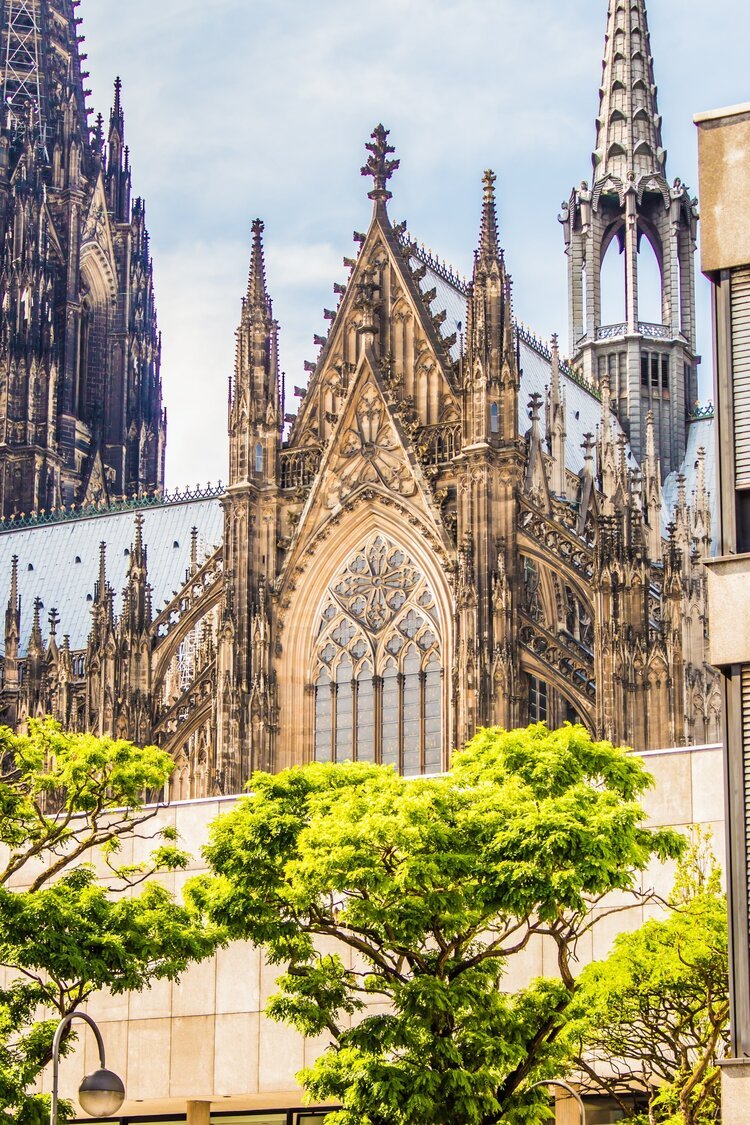


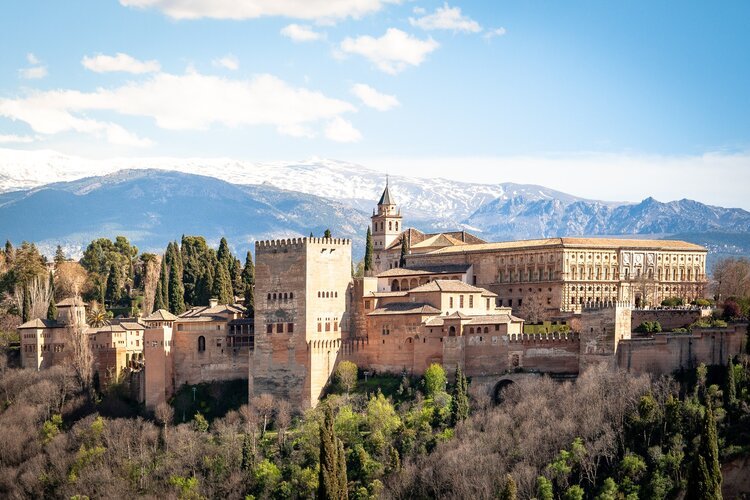


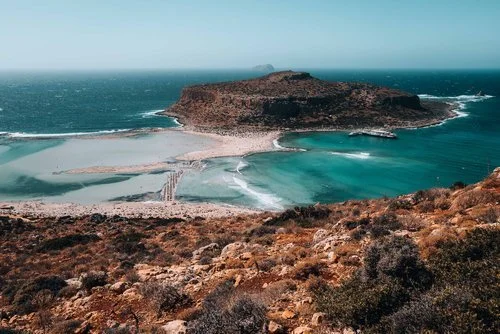

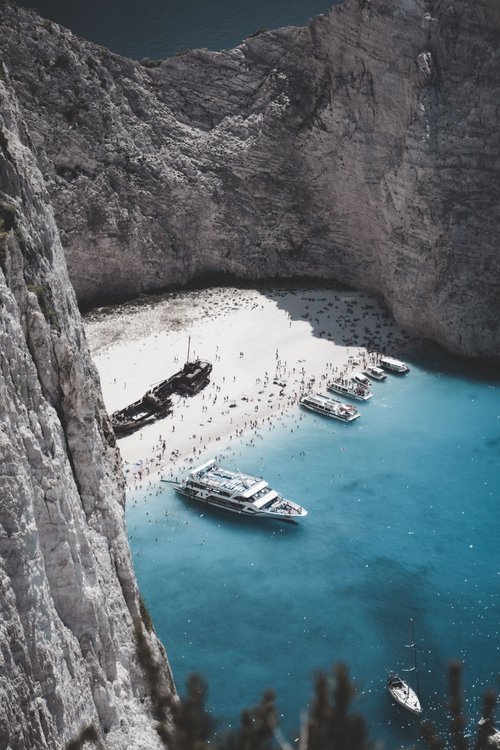



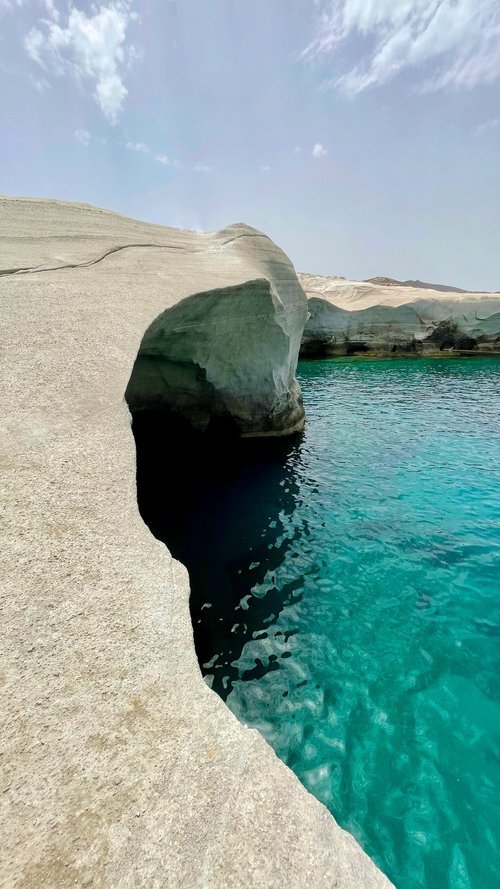


Winding coastal roads and whitewashed villages set the scene for your next adventure. This Southern Spain road trip dives deep into the huge haul of historical, cultural and culinary experiences.